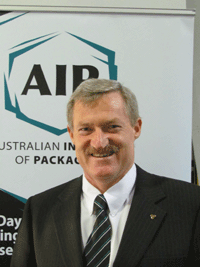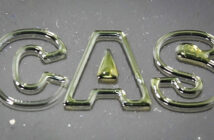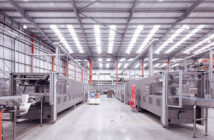By Pierre Pienaar, national president, Australian Institute of Packaging (AIP)
Those involved in food and beverage packaging know well that consumers and brand owners both are demanding increased shelf life from products. The modern food industry has developed and expanded because of its ability to deliver a wide variety of high quality food products to consumers on a nationwide and worldwide basis.
This feat has been accomplished by building stability into the products through processing, packaging, and additives that enable foods to remain fresh and wholesome throughout the distribution process. There is a commercial need to allow products to stay fresh on a retailer’s shelf for longer. This extension of shelf life is aimed at slowing down the deterioration of the product using a range of processes. Each of the processes is interdependent on packaging to preserve the product in a suspended state.
The principal mechanisms involved in the deterioration of processed foods are as follows:
1. microbiological spoilage sometimes accompanied by pathogen or germ development
2. chemical and enzymatic activity causing the breakdown of colour, odour, flavour and texture changes
3. moisture or other vapour migration which produces changes in texture, water activity and flavour
Therefore to enhance shelf life the focus ought to be on the following:
- reduce microbial activity
- increase the acidity
- addition of additives
- reduce water activity
- modify the immediate environment (MAP)
In addition to focusing on the above listed items, another format of packaging that can assist with this is active packaging. One of the main purposes of active packaging is to extend the shelf life of products.
Initially this was a supply chain issue but it is now a consumer concern, as freshness coupled with sustainable packaging has become an important buying factor. Research from foodproductiondaily.com published in June 2010 has indicated that freshness indicators on packaging will become critical to consumer choice over the next few years.
What is more, according to Active and Intelligent Packaging World dated 25 March, active packaging is set to expand at a rate of over five percent a year within the food and drinks market that will be worth 5.3 billion by 2015, of which the vast majority will comprise active packaging.
Consumer demands for convenience have created new innovations in the food product development and packaging industries. The widespread desire for products to use in the microwave oven has added further to the effort. Consumers are demanding more sustainable packaging solutions that also perform shelf life-extensions, whilst brand owners understand the commercial advantages that active packaging technology can deliver to their products.
In supply chain more work is being done on oxygen scavengers, moisture absorbers and barrier films that will enhance the shelf life of products. Consumers want packaging that keeps products clean, ready for eating, with longer shelf life, product security and value for money. This remains a big ask, but if success is to be achieved, packaging technologists need to rise to these demands.
New packaging strategies have been developed to address the challenges of extending shelf life in storage and transport. Modified Atmosphere Packaging is a technology that attempts to manipulate the atmosphere surrounding the produce in order to delay spoilage.
There are different types of modified atmosphere. One method injects nitrogen, carbon dioxide and/or oxygen into packs or containers in order to modify the air surrounding the food. This gas mixture or gas flushed type of system requires that the air surrounding the product be removed and the desired gas mixture is then inserted. The exact concentration percentage of oxygen, carbon dioxide and nitrogen used is dependent on the type of food or produce stored or being transported. The mixture is dependent on the packaging material, product and storage temperature. The gas must be inserted into an airtight enclosure.
An alternate and less expensive method incorporates additives directly into plastic films used for covering pallets or lining boxes of produce. Ethylene Absorption Packaging is a relatively new technology that falls into this category of modified atmosphere packaging methods and is a method that will be closely observed as more is learned about this technique. Pallet covers with ethylene absorbing technology delivers a higher quality product by minimising the amount of ethylene present during transport and storage of fruits and vegetables. This technology protects produce quality without the need for expensive gas and/or equipment.
One of the current buzz words in technology is without doubt nanotechnology. One of the fastest growing areas is the application of nanotechnology in packaging materials. As the food market has expanded to a worldwide marketplace, it is requiring a longer shelf life. New materials incorporating nano-particles have been able to reduce and in some cases eliminate the transmission of oxygen, and in addition have blocked the transmission of moisture from the product.
With the daily challenges of preserving product and minimising losses, growers, packers, shippers and retailers of produce now have new packaging options that allow them to dramatically increase shelf life.
Various packaging technologies as mentioned above can help food handlers remain competitive by reducing spoilage and delivering consistent quality products on every shipment. The speed of take up of packaging innovation will depend on the pace of the economic recovery. Innovations in packaging for extending shelf life will be a key driver over the next few years for manufacturers. Enhanced technical knowledge and input by packaging technologists and packaging engineers through improved performance qualities of materials will be required to fuel market growth.
Pierre Pienaar MSc, FAIP National President
Australian Institute of Packaging (AIP)
Visit: [email protected]
Email: www.aipack.com.au





























































































